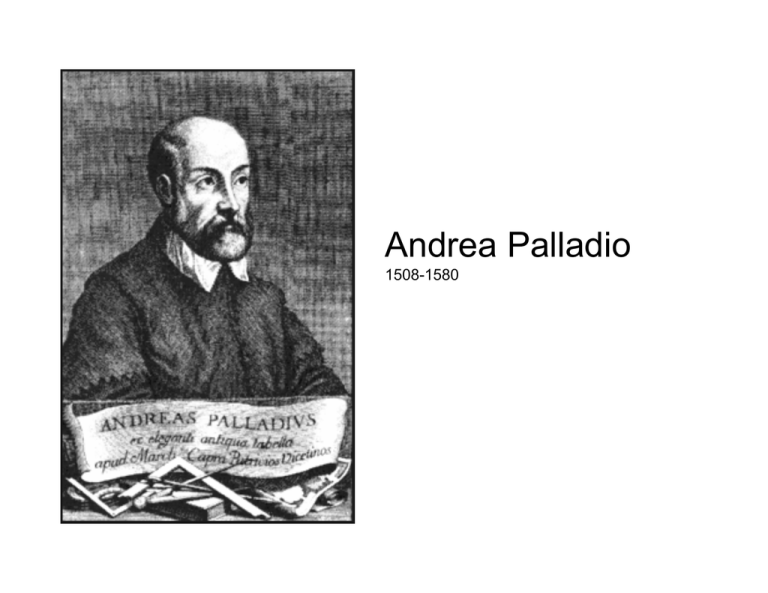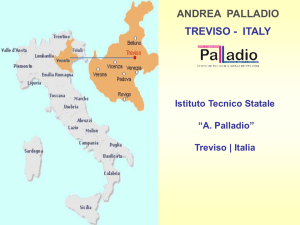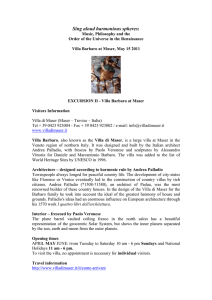Andrea Palladio 1508-1580
advertisement

Andrea Palladio 1508-1580 Predecessors, contemporaries • Dante Alighieri (1265 –1321), The Divine Comedy • Christopher Columbus (1451 –1506) • Brunelleschi (1337 – 1446) First architect to employ mathematical perspective to redefine Gothic and Romanesque space; Dome of Santa Maria del Fiore, Florence (1417 - 1434) • • • • Leonardo da Vinci (1452 – 1519) Michelangelo (1475 – 1564) Gallileo Gallilei (1564 – 1642) Andrea Pallado (1508 – 1580) Palladio’s life, projects • Born in Padova in 1508 • At age 15 went to Vicenza to became an assistant in a workshop of stonecutters and masons • Later introduced to the writings of Vitruvius, classical Roman architect Palladio’s life, projects • In 1548 he began receiving commissions for country villas from prominent Venetians (Barbaro, Cornaro) • Villa Malcontenta (1549 - 1563) Palladio’s life, projects • In 1560 he received first commission for work in Venice: completion of the Benedictine monastery San Giorgio Maggiore Palladio’s life, projects • Teatro Olimpico in Vicenca, 1584 • Four Books of Architecture, published in Venice in 1570 • Overview of his architectural principles as well as practical advice for builders The Palladian grammar • Eight steps for generating uni-axial villa plans 1. 2. 3. 4. 5. 6. 7. 8. • Grid definition Exterior wall definition Room layout Interior wall realignment Principal entrances (porticos, wall inflections) Exterior ornamentation (columns) Windows and doors Termination Unit of measure: the ancient foot of Vicenca standard ground floor wall thickness in his villas was two Vicenca feet The Palladian grammar Stage 1 Grid definition Every grid consists of (2m + 1) x n array of variously dimensioned rectangles • Bilateral symmetry of the grid – north-south of the coordinate system • Each rectangles to the left of the axis has a corresponding reflection to the right of the axis • Parameterization of the rules (page 8) The Palladian grammar Stage 3 Room Layout • The interior spaces in Palladio’s uniaxial villa plans may be – Rectangular – H shaped – T shaped and – + shaped • A plan can have at most one nonrectangular space and this space must be bisected by the north-south axis of the coordinate system



